Residents of UB city have secret wish to have windy and snowy winters, because wind is the only brave counterpart for the smoke in winter times.
Date: December 2014
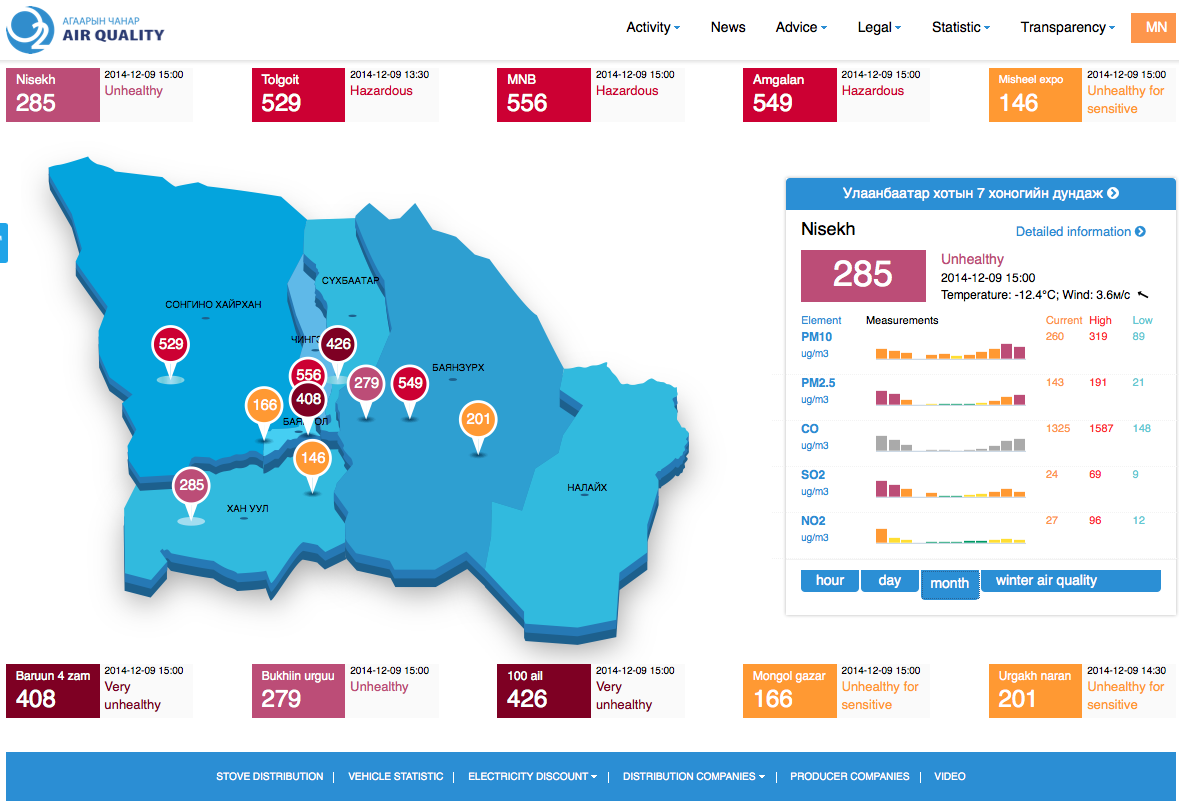 Currently residents of the following districts live in the DANGER ZONE:
Currently residents of the following districts live in the DANGER ZONE:
- Bayanzurkh: 294,908
- Bayangol: 192,614
- Songinokhairkhan: 261,971
- Sukhbaatar: 137,834
- Chingeltei: 155,000
Total of population of over one million is facing a REAL DANGER.
AIR POLLUTION:
Air pollution has become one of the triggering factors in declining health of the population and increased occurrences of respiratory allergies, central neural system illnesses, soaring cancer occurrences and other genetic malformations, leading to the tragic miscarriages or deterioration in embryo development, weak immune system in children and is seen as a major threat to the child growth development.
UB CITY AIR POLLUTANTS
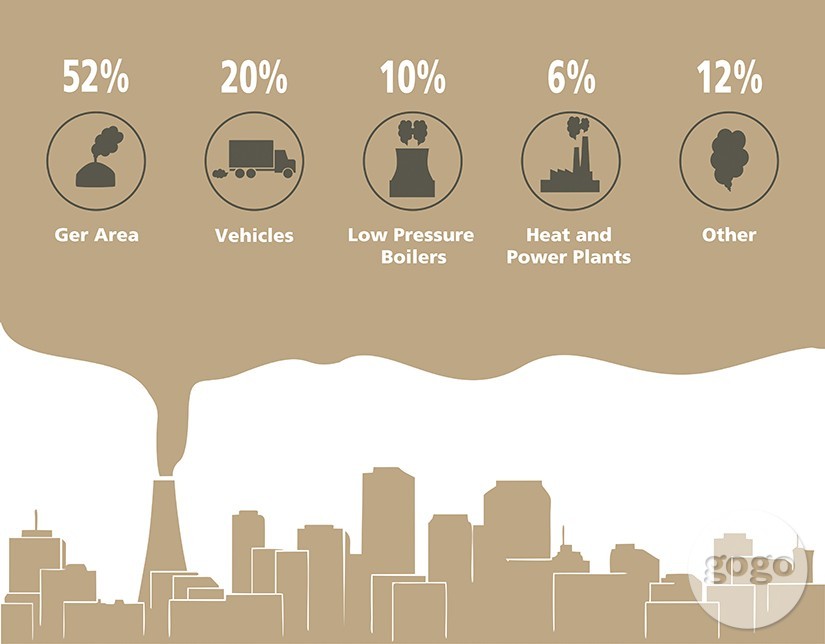
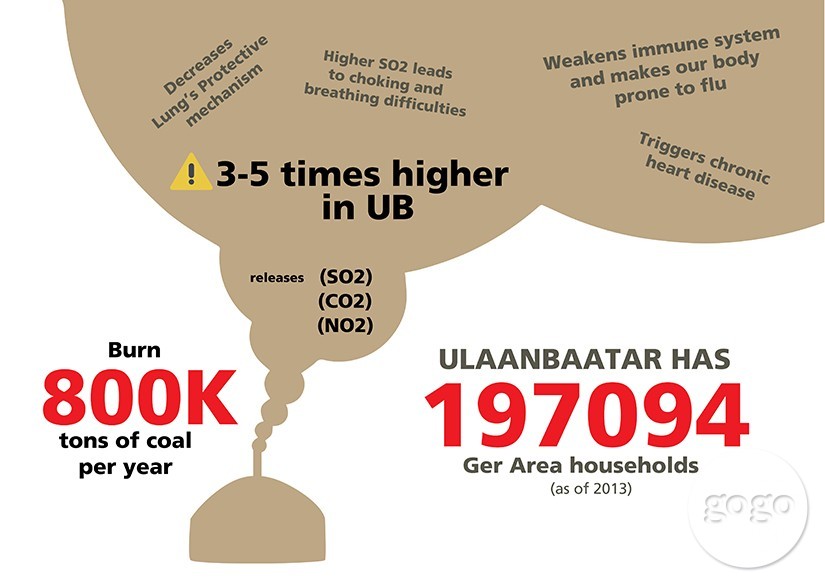
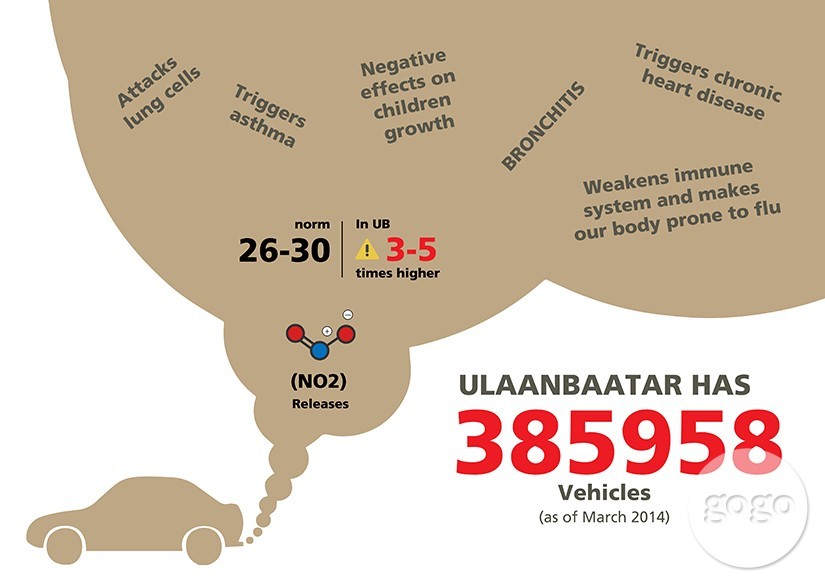
HEALTH PROBLEMS UB RESIDENTS FACING CAUSED BY AIR POLLUTION:
- Winter season is when flu outbreaks happen most of the time. Many complain on cough even there is no evident sign of flu or common cold.
- Children aged 0-5 are prone to cold and flu and are in danger to have developed into pneumonia easily. Pneumonia caused death among children aged 0-5 is listed in second place.
- Allergy occurrences increased among the population.
- Increased deterioration in embryo development, miscarriages and stillbirths.
- Increased chronic heart diseases
Infant mortality of children aged 0-5 registered in 2013 reached 1,438 nationwide and 45.68 percent of it applies to UB city alone.
40,187 newborns were registered in 2013, hence 546 case of neo-mortality were registered, which is the 10.98 percent increase compared to the previous year data. Infant mortality of children aged 0-5 registered in 2013 reached 1,438 nationwide and 45.68 percent of it applies to UB city alone.
Respiratory disease is the main cause of the health problems among children under age of 5. Pneumonia, comprising 87.27 percent of the causes, is the leading cause of infant mortality.
The below graph shows percentage of the respiratory diseases in children.
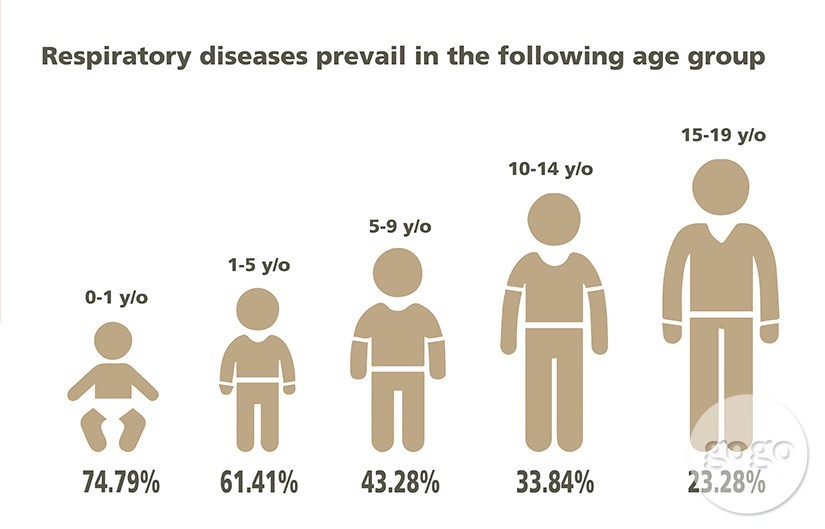
Interestingly enough, 380 cases of birth defect were registered in 2013 and showed 13.68 percent INCREASE compared with previous year. There are not enough grounds or studies held to prove that these numbers increased due to the air pollution, but it definitely calls for the need to conduct one.
Pollutants from Coal-Burning Stoves Strongly Associated with Miscarriages in Mongolia
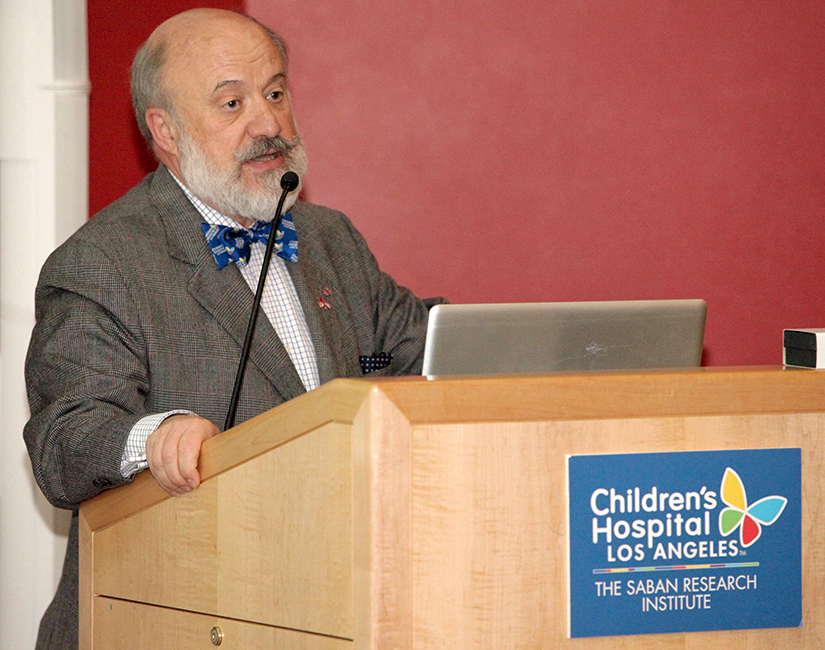 Burning coal for domestic heating may contribute to early fetal death according to a new study by experts from The Saban Research Institute of Children’s Hospital Los Angeles and Ulaanbaatar, Mongolia – the coldest capital city in the world. In a paper published in the journal BMC Pregnancy and Childbirth, researchers report “alarmingly strong statistical correlations” between seasonal ambient air pollutants and pregnancy loss in Ulaanbaatar (UB), Mongolia.
Burning coal for domestic heating may contribute to early fetal death according to a new study by experts from The Saban Research Institute of Children’s Hospital Los Angeles and Ulaanbaatar, Mongolia – the coldest capital city in the world. In a paper published in the journal BMC Pregnancy and Childbirth, researchers report “alarmingly strong statistical correlations” between seasonal ambient air pollutants and pregnancy loss in Ulaanbaatar (UB), Mongolia.
UB has one of the highest levels of air pollution of all world capitals, with sulfide dioxide and particulate matter levels during winter months, which are up to 23 times World Health Organization standards. Air pollution in winter is largely caused by coal burning in Ger stoves (Ger refers to the traditional round, felt tent used as a portable residence by nomadic Mongolian people, but such stoves are also used in wooden houses within the Ger district.)
380 cases of birth defect were registered in 2013 and showed 13.68 percent INCREASE compared with previous year.
The scientists, led by David Warburton, OBE, DSc, MD, MMM, FRCP, FRCS, FRCPCH, professor of Pediatrics and Surgery at The Saban Research Institute of Children’s Hospital Los Angeles and Keck School of Medicine at the University of Southern California, examined the association between spontaneous abortion (miscarriages) and seasonal variation of air pollutants. The measurements were gathered near the National Center for Maternal and Child Health (NCMCH)—which provides the majority of obstetric and gynecological services in UB—and compared to the medical records of 1,219 women in the region who had been admitted to the hospital between 2009 and 2011 due to fetal death prior to 20 weeks gestational age.
“We found that the incidence of miscarriage revealed a striking seasonal pattern of variation,” said Warburton.
While the overall rate of miscarriages (occurring in approximately 15 to 20 percent of pregnancies) reported in UB is similar to that of Western countries, including the United States, the study showed that spontaneous abortion incidence per calendar month increased from 23 per 1,000 live births in May to 73 per 1,000 live births in December 2011.
Monthly average ambient levels of air pollutants showed increases in relation to the duration of hours of darkness, as well as the coldest temperatures—when Ger heating stoves are used most.
“We and our colleagues in government and academia in Mongolia are expending concerted efforts to improve stove efficiency and to educate the public about correct and more efficient lighting and heating methods,” Warburton said, adding that a similar, strong correlation between air pollutants and miscarriages may also occur elsewhere in the world where similar levels of air pollution exist.
“The disturbingly strong correlation between air pollution indices and fetal death that we found suggests that much more needs to be done to further ameliorate the toxic effects of air pollution on the human unborn,” Warburton concluded.
Additional contributors to the study include Davaasambuu Enkhmaa, Badrakh Javzandulam, Jadambajav Uyanga, Yarinpil Khishigsuren and Shonkuuz Enkhtur, National Center for Maternal and Child Health, Ulaanbaatar, Mongolia; Nicole Warburton, Mills College and The Saban Research Institute, Children’s Hospital Los Angeles; and Sereeter Lodoysamba, The National University of Mongolia, Ulaanbaatar.
The study was funded in part by the National Institutes of Health Fogarty International Center/ National Institutes of Environmental Health Award 1D43ES0228620.
HOW MUCH BUDGET IS SPENT TO FIGHT THE AIR POLLUTION?
Clean Air Fund was established in 2011 under Special Fund of Government of Mongolia to reduce and fight the Air Pollution in UB city. This agency is funded from the State Budget and donations of international organizations.

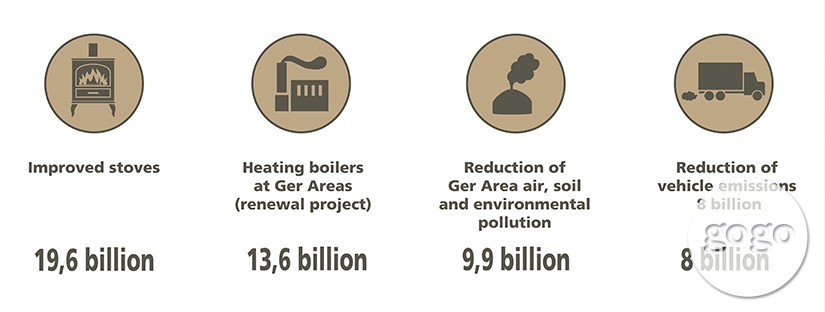
These are numbers that apply only to Clean Air fund operations, while there are numerous project and programs run by different agencies and organizations.
AIR POLLUTION CONSEQUENCES WE MIGHT FACE
Cold and flu medicine prices start at MNT 1000, while some medication for children might cost parents MNT16,000 -25,000. Parents spend enormous amount of money on cold medications each year to avoid any complications associated with common cold. These expenses are sure to rise in the coming years.
Another issue that is evident already now is the need to open up hospitals, which focus on contagious respiratory diseases only, as the number of occurrences skyrocket every year and is involving not just children, but adults and elders.
In this sense, air pollution is the visible threat not only for health, but also to economic welfare of the households. On national level, air pollution is starting to threaten the national security, by imposing health issues, which further looms population growth.
Economically the budget allocated to fight with air pollution is to increase further.
FACTS ON AIR POLLUTION:
- Shortens life expectancy by 1-2 years
- Has drastic effects more on children, affecting normal development
- Triggers allergy, eye irritation and respiratory diseases
- Electric cars have less emissions of air pollutants
- Increases chance of heart attacks
- Infants, pregnant women and elders are most affected by air pollution
Sources:
http://www.conserve-energy-future.com, http://www.who.int, http://www.chla.org, http://agaar.mn/index, http://www.airquality.ub.gov.mn,
Residents of UB city have secret wish to have windy and snowy winters, because wind is the only brave counterpart for the smoke in winter times.
Date: December 2014
 Currently residents of the following districts live in the DANGER ZONE:
Currently residents of the following districts live in the DANGER ZONE:
- Bayanzurkh: 294,908
- Bayangol: 192,614
- Songinokhairkhan: 261,971
- Sukhbaatar: 137,834
- Chingeltei: 155,000
Total of population of over one million is facing a REAL DANGER.
AIR POLLUTION:
Air pollution has become one of the triggering factors in declining health of the population and increased occurrences of respiratory allergies, central neural system illnesses, soaring cancer occurrences and other genetic malformations, leading to the tragic miscarriages or deterioration in embryo development, weak immune system in children and is seen as a major threat to the child growth development.
UB CITY AIR POLLUTANTS



HEALTH PROBLEMS UB RESIDENTS FACING CAUSED BY AIR POLLUTION:
- Winter season is when flu outbreaks happen most of the time. Many complain on cough even there is no evident sign of flu or common cold.
- Children aged 0-5 are prone to cold and flu and are in danger to have developed into pneumonia easily. Pneumonia caused death among children aged 0-5 is listed in second place.
- Allergy occurrences increased among the population.
- Increased deterioration in embryo development, miscarriages and stillbirths.
- Increased chronic heart diseases
Infant mortality of children aged 0-5 registered in 2013 reached 1,438 nationwide and 45.68 percent of it applies to UB city alone.
40,187 newborns were registered in 2013, hence 546 case of neo-mortality were registered, which is the 10.98 percent increase compared to the previous year data. Infant mortality of children aged 0-5 registered in 2013 reached 1,438 nationwide and 45.68 percent of it applies to UB city alone.
Respiratory disease is the main cause of the health problems among children under age of 5. Pneumonia, comprising 87.27 percent of the causes, is the leading cause of infant mortality.
The below graph shows percentage of the respiratory diseases in children.

Interestingly enough, 380 cases of birth defect were registered in 2013 and showed 13.68 percent INCREASE compared with previous year. There are not enough grounds or studies held to prove that these numbers increased due to the air pollution, but it definitely calls for the need to conduct one.
Pollutants from Coal-Burning Stoves Strongly Associated with Miscarriages in Mongolia
 Burning coal for domestic heating may contribute to early fetal death according to a new study by experts from The Saban Research Institute of Children’s Hospital Los Angeles and Ulaanbaatar, Mongolia – the coldest capital city in the world. In a paper published in the journal BMC Pregnancy and Childbirth, researchers report “alarmingly strong statistical correlations” between seasonal ambient air pollutants and pregnancy loss in Ulaanbaatar (UB), Mongolia.
Burning coal for domestic heating may contribute to early fetal death according to a new study by experts from The Saban Research Institute of Children’s Hospital Los Angeles and Ulaanbaatar, Mongolia – the coldest capital city in the world. In a paper published in the journal BMC Pregnancy and Childbirth, researchers report “alarmingly strong statistical correlations” between seasonal ambient air pollutants and pregnancy loss in Ulaanbaatar (UB), Mongolia.
UB has one of the highest levels of air pollution of all world capitals, with sulfide dioxide and particulate matter levels during winter months, which are up to 23 times World Health Organization standards. Air pollution in winter is largely caused by coal burning in Ger stoves (Ger refers to the traditional round, felt tent used as a portable residence by nomadic Mongolian people, but such stoves are also used in wooden houses within the Ger district.)
380 cases of birth defect were registered in 2013 and showed 13.68 percent INCREASE compared with previous year.
The scientists, led by David Warburton, OBE, DSc, MD, MMM, FRCP, FRCS, FRCPCH, professor of Pediatrics and Surgery at The Saban Research Institute of Children’s Hospital Los Angeles and Keck School of Medicine at the University of Southern California, examined the association between spontaneous abortion (miscarriages) and seasonal variation of air pollutants. The measurements were gathered near the National Center for Maternal and Child Health (NCMCH)—which provides the majority of obstetric and gynecological services in UB—and compared to the medical records of 1,219 women in the region who had been admitted to the hospital between 2009 and 2011 due to fetal death prior to 20 weeks gestational age.
“We found that the incidence of miscarriage revealed a striking seasonal pattern of variation,” said Warburton.
While the overall rate of miscarriages (occurring in approximately 15 to 20 percent of pregnancies) reported in UB is similar to that of Western countries, including the United States, the study showed that spontaneous abortion incidence per calendar month increased from 23 per 1,000 live births in May to 73 per 1,000 live births in December 2011.
Monthly average ambient levels of air pollutants showed increases in relation to the duration of hours of darkness, as well as the coldest temperatures—when Ger heating stoves are used most.
“We and our colleagues in government and academia in Mongolia are expending concerted efforts to improve stove efficiency and to educate the public about correct and more efficient lighting and heating methods,” Warburton said, adding that a similar, strong correlation between air pollutants and miscarriages may also occur elsewhere in the world where similar levels of air pollution exist.
“The disturbingly strong correlation between air pollution indices and fetal death that we found suggests that much more needs to be done to further ameliorate the toxic effects of air pollution on the human unborn,” Warburton concluded.
Additional contributors to the study include Davaasambuu Enkhmaa, Badrakh Javzandulam, Jadambajav Uyanga, Yarinpil Khishigsuren and Shonkuuz Enkhtur, National Center for Maternal and Child Health, Ulaanbaatar, Mongolia; Nicole Warburton, Mills College and The Saban Research Institute, Children’s Hospital Los Angeles; and Sereeter Lodoysamba, The National University of Mongolia, Ulaanbaatar.
The study was funded in part by the National Institutes of Health Fogarty International Center/ National Institutes of Environmental Health Award 1D43ES0228620.
HOW MUCH BUDGET IS SPENT TO FIGHT THE AIR POLLUTION?
Clean Air Fund was established in 2011 under Special Fund of Government of Mongolia to reduce and fight the Air Pollution in UB city. This agency is funded from the State Budget and donations of international organizations.


These are numbers that apply only to Clean Air fund operations, while there are numerous project and programs run by different agencies and organizations.
AIR POLLUTION CONSEQUENCES WE MIGHT FACE
Cold and flu medicine prices start at MNT 1000, while some medication for children might cost parents MNT16,000 -25,000. Parents spend enormous amount of money on cold medications each year to avoid any complications associated with common cold. These expenses are sure to rise in the coming years.
Another issue that is evident already now is the need to open up hospitals, which focus on contagious respiratory diseases only, as the number of occurrences skyrocket every year and is involving not just children, but adults and elders.
In this sense, air pollution is the visible threat not only for health, but also to economic welfare of the households. On national level, air pollution is starting to threaten the national security, by imposing health issues, which further looms population growth.
Economically the budget allocated to fight with air pollution is to increase further.
FACTS ON AIR POLLUTION:
- Shortens life expectancy by 1-2 years
- Has drastic effects more on children, affecting normal development
- Triggers allergy, eye irritation and respiratory diseases
- Electric cars have less emissions of air pollutants
- Increases chance of heart attacks
- Infants, pregnant women and elders are most affected by air pollution
Sources:
http://www.conserve-energy-future.com, http://www.who.int, http://www.chla.org, http://agaar.mn/index, http://www.airquality.ub.gov.mn,

